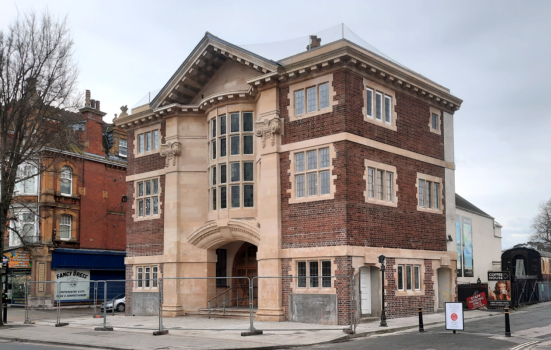Local authorities in the areas of the seven funded projects in Cultural Development Fund round two are found to have strong cultural strategies and value their local cultural sector.

REVUpminster
The seven successful bids from round two of the Cultural Development Fund (CDF2) are in areas where local authorities have shown commitment to culture, analysis has found.
The Cultural Development Fund (CDF) Network, a national collective that shares best practice in relation to CDF investment, has collated details of all winning bids - located in Barnsley, Berwick, Isle of Wight, Middlesborough, Rochdale, Stockport and Torbay - for the first time since applicants were notified of their success earlier this year. The projects will share £18.5m for plans focused on heritage-led regeneration.
Jason Jones-Hall, Director of Development at Five10Twelve, which manages the CDF Network, told ArtsProfessional that after one-to-one meetings with each of the project teams, it was clear all “genuinely see the value of investing in culture”.
READ MORE:
The CDF is one of three funding streams that makes up the Culture Investment Fund, aimed at supporting culture-led growth in English towns and cities outside London. CDF2 focused on funding capital projects, although up to £700,000 of each project’s budget can go towards activity spend at the supported buildings.
CDF2 applicants had to demonstrate ownership or 20-year leaseholds of the buildings, which favoured councils with large property portfolios, Jones-Hall said. Six of the seven funded projects are council led, while the seventh, in Berwick, is being led by English Heritage.
Jones-Hall said the winning projects are associated with “councils with a strong cultural strategy that really value their local cultural sector”.
The CDF application window is longer than similar regeneration-focused funding streams, such as the Levelling-Up Fund, which Jones-Hall said benefits councils with “strong connections with the creative sector, [that] know what is out there and what projects are viable”.
Martin Thomas, Executive Director of Torbay Culture, leaders on one of Torbay’s CDF2 projects, said Torbay Council formally adopted the Torbay Heritage Strategy at the end of 2020, ahead of application to CDF2.
“That helped frame our plans and recognised the Paignton Picture House as a priority.
“It’s a positive story about alignment between planning and heritage – and how we’re collectively transforming the perceptions of Torbay as a place and local authority.”
Round three deadline
The deadline to raise an expression of interest to the third CDF round (CDF3) is 29 July.
Any area in England, excluding London, can apply for grants between £2m and £5m, with £30.2m available in total, the largest amount earmarked for any CDF round thus far.
The fund is administered by Arts Council England. Their CDF3 guidance says applicants must demonstrate “a strategic vision for their development and both cultural maturity and commitment to creative and culture-led growth”.
DCMS is responsible for making funding decisions. For the first time, priority will be given to towns and cities included in the government’s 109 Levelling Up for Culture Places. The list was created after CDF2 applicants submitted their applications, although five of the seven project areas feature.
Jones-Hall said CDF3 could be a good opportunity for those currently applying to the UK Shared Prosperity Fund (UKPSF). Linked to the government’s Levelling Up Agenda, UKSPF’s investment plan submission window is open until 1 August.
“If there are projects that might have been developed with UKSPF in mind that didn’t make the cut with local authorities, CDF3 might be another route for them if the project is well-developed.”
Round one extensions
The five funded projects from the first CDF round (CDF1) negotiated project extensions after facing pandemic related delays.
The projects - located in Grimsby, Plymouth, Wakefield, Worcester and the Thames Estuary across both Kent and Essex - shared £20m in 2019, with project work now scheduled to end between November 2022 and March 2023.
The CDF Network has scheduled a symposium for December to share interim learning and results from the projects, with more in depth evaluations set to take place next year.
Jones-Hall said the CDF Network recently visited one of the projects in person for the first time since the pandemic and found that CDF has “acted as a catalyst” for further development.
“It’s not just about what the projects have delivered within the funding. It’s taken a lot of activity that was either starting to happen, or was happening in pockets, and catalysed everything to help coalesce around this focus.
“[The teams] are now thinking about legacy, how they keep momentum going now that organisations are more connected and new organisations have been brought in.
“It’s really helped it become more than the sum of its parts.”
Further information on the CDF2 projects is available on CDF Network’s website.





Comments
EWilcox replied on Permalink
"Kent Thames Estuary"